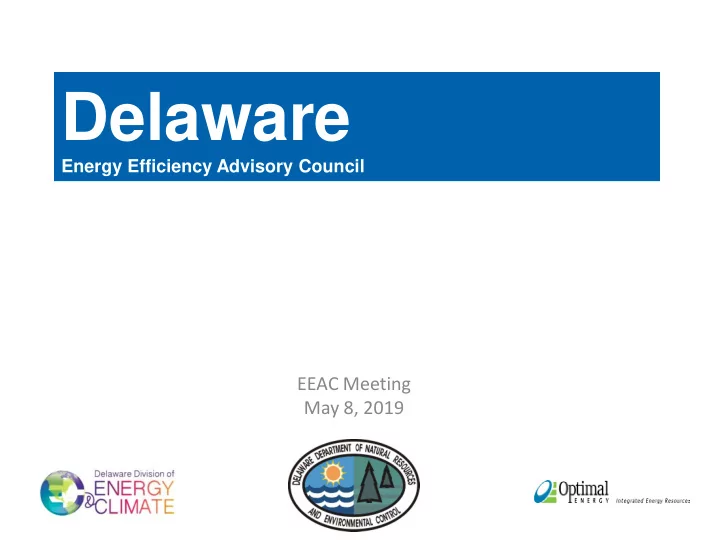

Delaware Energy Efficiency Advisory Council EEAC Meeting May 8, 2019
What is Demand? Energy (MWh) = the amount Demand (MW) = the rate at vs. of electricity consumed over a which energy is consumed certain time period Example: A 10 W LED bulb needs 10 W from the grid when it’s in use. If the bulb is on for 4 hours, it consumes 40 Wh of energy
What is Demand? Capacity (MW) = the maximum output an electricity generator can physically produce. Utilities need distribution capacity to meet the greatest possible demand on the grid during a single hour (peak demand) 10% of the country's electric system capacity is built to meet demand in just 1% of hours during the year
When is Peak Demand in DE? • Delaware’s greatest demand for electricity usually occurs during warmer weather air conditioning increases • The PJM Summer peak period is defined as June through August nonholiday weekdays from 2pm to 7pm • PJM’s wholesale peaks and constraints might not coincide with peak constraints from local utilities This Photo by Unknown Author is licensed under CC
Why is Demand Reduction important? • Reduces emissions since dirtier fuel sources come online during peak times • Balances reliability • Mitigates price volatility • Avoids additional investments in energy generation and peak capacity • Defers investments in transmission and distribution infrastructure
Strategies for Reducing Demand Load Following Active Encourages Encourages (passive ) customers to reduce customers to reduce overall demand, demand at specific without a specified times when system time period, such as reliability is through energy threatened or to efficiency or certain help constrain high behavioral programs market prices such as through demand response (DR)
Types of Demand Response Source: http://www.synapse-energy.com/sites/default/files/Utility-DR-17-010.pdf
Active Demand Management = More Than Traditional DR • Modern ADM not limited to traditional DR or load control • ADM can also mean managing demand to meet a wider variety of system needs – Such as load shifting to smooth out load shapes, or maximizing effectiveness of renewables for the grid. • Can also help manage load associated with electric vehicles (EVs) and strategic electrification • Example ADM strategies include battery storage and thermal storage
How can ADM be used, for which objectives and purposes? ADM Service Types Across Timescales and Objectives to Meet Grid Needs Source: 2025 California Demand Response Potential Study, LBL, March 2017
End Uses and Enabling Technologies Source: http://ma-eeac.org/wordpress/wp-content/uploads/2025-California-DR-Potential-Study-Presentation-1.pdf
Recommend
More recommend